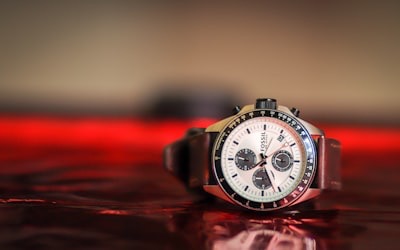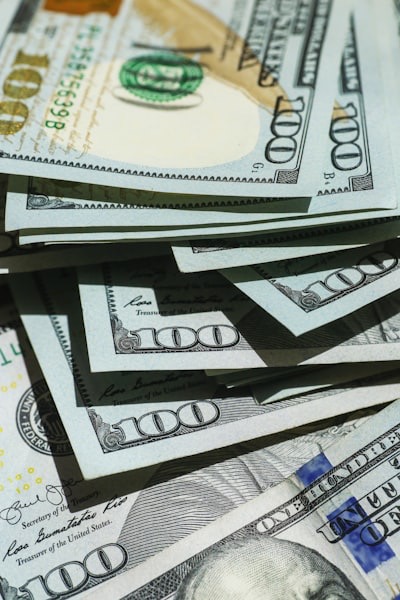What are the different types of watches available in the market?

There are various types of watches available in the market, including analog watches, digital watches, chronograph watches, dive watches, dress watches, smartwatches, and luxury watches. Each type offers unique features and functionalities to cater to different preferences and needs.
What are the different types of watches available in the market?

There are various types of watches available in the market, including analog watches, digital watches, chronograph watches, dive watches, dress watches, sport watches, and smartwatches. Each type caters to different needs and preferences, offering a wide range of features and styles to choose from.
In today’s global economy, the watch industry has become a lucrative target for money laundering activities. With the high price tags associated with luxury timepieces, criminals are leveraging the watch market to disguise the origins of their illegally obtained funds. Money laundering poses significant risks to the watch business, including financial implications, legal consequences, and damage to the reputation of Swiss watch brands like Tissot among enthusiasts. However, with increased awareness and proper measures, such as implementing strict anti-money laundering policies and procedures, the watch industry, including Tissot’s timeless and affordable collections that showcase their expert craftsmanship, can continue to thrive while preventing money laundering.
Understanding Money Laundering in the Swiss Watch Industry

Money laundering is a complex process that involves disguising the origins of illegally obtained money. It is often described as the process of making illicit funds appear legitimate. In the context of the watch industry, money laundering involves using the purchase and sale of watches to clean “dirty” money through legal avenues. Criminals exploit the luxury watch market, where watches made from high-value materials, such as stainless steel, and new arrivals, are frequently traded. Understanding the dynamics of money laundering in the watch industry is crucial to develop effective preventive measures.
Defining Money Laundering
Money laundering entails obscuring the origins of unlawfully acquired funds, making them seem legitimate. It involves intricate processes to hide the true source of money and make dirty money appear clean through legal means. Defining money laundering is crucial in combating financial crimes effectively.

How Money Laundering works in the Watch Industry
Money launderers take advantage of the luxury watch market for illicit transactions, leveraging the high value of watches. Criminals use watch purchases to legitimize illegal funds within the industry, posing challenges for detection and prevention. Understanding the dynamics of money laundering in the watch sector is imperative to combat such illicit activities effectively.

The Impact of Money Laundering on the Watch Business
Financial Implications: Money laundering can tarnish a company’s financial integrity and stability. Legal Consequences: Involvement in money laundering activities can lead to severe legal penalties and damage the watch business’s reputation within the industry.

Financial Implications
Money laundering in the watch industry poses severe financial risks for businesses, potentially leading to substantial losses and legal repercussions. The illicit activities can result in asset seizures, monetary damages, and instability within watch companies. Addressing these financial implications is crucial to safeguard the economic integrity of watch businesses against the detrimental effects of money laundering.

Legal Consequences
Engaging in illicit financial activities breaks industry regulations, leading to severe legal repercussions in the watch sector. Businesses involved in money laundering risk substantial fines and even criminal prosecution. Violating anti-money laundering laws can result in harsh penalties, emphasizing the critical need for compliance with legal requirements in the watch business realm. Understanding the legal consequences associated with illicit financial practices is paramount for ensuring regulatory adherence.

Impact on Reputation

Money laundering has the potential to tarnish the esteemed reputation and credibility of watch brands within the industry. When linked to money laundering, watch businesses risk significant damage to their reputation and consumer trust. Incidents of money laundering scandals can lead to a loss of trust from consumers towards watch companies. Safeguarding the reputation of watch brands is paramount in the fight against money laundering and maintaining brand integrity.
Measures to Prevent Money Laundering

Implementing stringent KYC policies, conducting regular audits, and training staff to identify suspicious activities are vital steps in combating money laundering. By enforcing rigorous protocols, businesses can deter illicit financial activities within the watch industry. Upholding transparency and accountability through thorough monitoring and reporting mechanisms is crucial in safeguarding against money laundering risks.
Implementing Strict KYC Policies

Enforcing robust KYC policies enables watch businesses to authenticate customer identities and transactions efficiently. These policies play a vital role in identifying and verifying individuals involved in watch transactions, essential for combatting money laundering effectively. By implementing stringent KYC procedures, businesses can detect and deter illicit financial activities, mitigating the inherent risks in the watch industry. Upholding strict KYC protocols is paramount in protecting the integrity and transparency of watch transactions.
Regular Auditing & Reporting

Enhancing transparency in the watch industry, regular audits and reporting monitor financial activities, detecting suspicious transactions. Identifying potential money laundering, robust mechanisms ensure compliance and risk mitigation, crucial for prevention. Diligent standards maintain integrity, preventing illicit activities.
Training Employees to Detect Suspicious Activities

Enhancing employee knowledge through specialized programs enables efficient detection of suspicious activities. Recognizing red flags linked to potential money laundering is a key focus area. Equipping staff with the ability to promptly report any irregular transactions strengthens preventive measures. Consistent training sessions ensure that employees are well-versed in the latest detection strategies, bolstering the organization’s defenses against illicit financial activities.
Role of Regulatory Bodies in Preventing Money Laundering

Role of regulatory bodies in combating money laundering is pivotal. They establish legal frameworks, guidelines, and enforce compliance within the watch industry. Through monitoring, regulatory bodies detect and prevent illicit financial activities, safeguarding the sector’s integrity. By ensuring adherence to stringent anti-money laundering regulations, these bodies contribute to a transparent and accountable business environment. Their proactive measures help in maintaining trust and credibility, fostering a culture of compliance and ethical conduct among watch industry stakeholders.
Legal Frameworks and Guidelines

Establishing a solid groundwork for rigorous anti-money laundering measures, adherence to set guidelines becomes critical in deterring money laundering. Operating ethically and legally necessitates compliance with legal frameworks, offering businesses a clear path to effective prevention strategies. Thorough understanding and implementation of legal requirements are vital components in the fight against money laundering.
Monitoring and Enforcement

Continuous vigilance over financial transactions aids in identifying and thwarting money laundering schemes. Vigorous enforcement strategies guarantee swift actions against any questionable conduct. Routine audits and assessments play a pivotal role in proactively combatting money laundering activities. Immediate enforcement measures act as deterrents to potential perpetrators. Strong monitoring frameworks are crucial for upholding the credibility of financial transactions.
Case Studies: Successful Prevention of Money Laundering

Luxury Watch Retailer A exemplifies a sterling success in anti-money laundering efforts, showcasing stringent KYC practices and rigorous auditing procedures. In contrast, Luxury Watch Retailer B serves as a cautionary tale, highlighting the importance of continuous employee training to detect suspicious activities promptly. These case studies underscore the pivotal role that proactive measures play in safeguarding the watch industry against illicit financial activities.
Luxury Men´s Watch Retailer A – A Success Story
Luxury Watch Retailer A’s impressive journey highlights the significance of stringent adherence to legal regulations, showcasing the positive outcomes of effective anti-money laundering strategies. By prioritizing compliance and robust practices, this retailer sets a benchmark for preventing money laundering effectively in the industry. Their success story exemplifies the benefits of upholding measures, positioning Luxury Watch Retailer A as a role model for other businesses striving for excellence in combating financial crimes.
Luxury Men´s Watch Retailer B – Lessons Learned
Reflecting on the experience of Luxury Watch Retailer B underscores the repercussions of inadequate . The repercussions faced by the retailer underscore the significance of robust compliance with regulations. Examining the difficulties encountered by Luxury Watch Retailer B offers crucial lessons for enhancing anti-money laundering strategies.
Future Trends in Anti-Money Laundering Measures

Embracing technological advancements like blockchain for transparent transactions and AI for anomaly detection will revolutionize efforts. The evolving legal landscape demands continuous adaptation to compliance requirements. Enhancing customer due diligence through digital identity verification and biometric authentication will be crucial in combating sophisticated schemes. Collaboration with regulatory bodies and sharing best practices globally is key to staying ahead of financial crimes.
Technological Innovations Warranty

Embracing the latest technological advancements like AI and machine learning enhances the effectiveness of efforts. By leveraging cutting-edge technologies, the efficiency and accuracy of anti-money laundering processes are significantly improved. Real-time monitoring enabled through technological innovations helps in the early detection of suspicious financial activities, strengthening the overall resilience of initiatives.
Building a Robust Anti-Money Laundering Program

To establish a strong anti-money laundering initiative, create a tailored program for your watch business. Educate your team on spotting suspicious behaviors and complying with anti-money laundering standards. Continuously assess and refine your program to address changing risks effectively. Leverage technology to optimize the efficiency of your anti-money laundering endeavors.
Maintaining Transparency with Customers

To uphold transparency with patrons, openly discuss anti-money laundering efforts. Educate them on how transparency safeguards them and your enterprise. Urge customers to flag any dubious activities they notice. Offer easily understandable details about anti-money laundering protocols. Foster trust through transparent, ethical business dealings.
How Can the Watch Industry Stay One Step Ahead of Money Launderers?
By collaborating with regulatory authorities, staying updated on emerging anti-money laundering trends becomes possible. Embracing innovative technologies enhances detection and prevention efforts. Creating a culture of compliance and integrity within the industry helps combat money laundering collectively. Sharing best practices and insights with peers and engaging in continuous education are vital strategies.
Tips for preventing money laundering in the watch business

To mitigate money laundering risks in the watch business, thorough due diligence on customers and partners is crucial. Monitoring transactions for any suspicious activities and implementing robust internal controls are vital steps in preventing illicit financial activities. Staying informed about regulatory changes and adjusting practices accordingly is essential.
Explore industry events and workshops on anti-money laundering in the watch sector. Stay updated through subscribed newsletters emphasizing best practices. Engage in professional watch associations for networking and resources. Participate in online communities discussing anti-money laundering topics. Seek tailored advice from legal experts on compliance issues.
Conclusion
In conclusion, preventing money laundering in the watch business requires a proactive and multi-faceted approach. By implementing strict KYC policies, conducting regular audits, and training employees to detect suspicious activities, watch businesses can significantly reduce the risk . Additionally, staying updated on legal frameworks and industry guidelines, as well as leveraging technological innovations, can help businesses stay one step ahead of money launderers. By taking these measures, the watch industry can create a secure and trustworthy environment for all stakeholders involved.
https://www.fossilgroup.com/compliance/regulatory-compliance/
https://www.investopedia.com/terms/m/moneylaundering.asp
https://www.justice.gov/archives/jm/criminal-resource-manual-2101-money-laundering-overview
https://www.interpol.int/en/Crimes/Financial-crime/Money-laundering
https://www.youtube.com/user/watchismo/
https://instagram.com/watchesdotcomhttps://www.tiktok.com/@vincerocollective

Leave a Reply